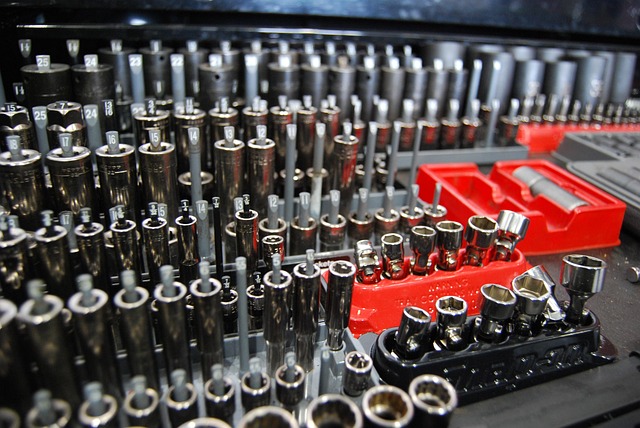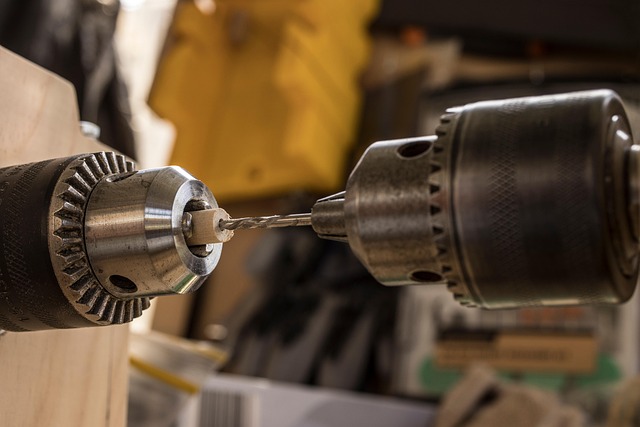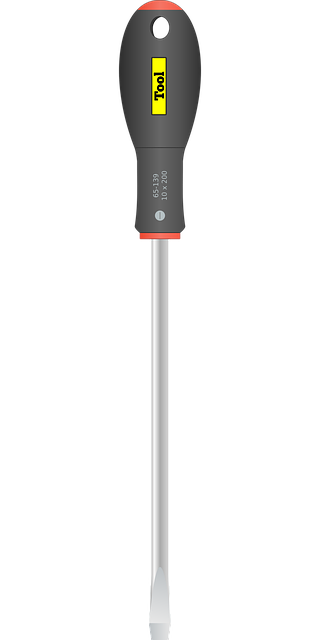Streamline Your Auto Body Shop Visit: Tips for Faster Appointments
TL;DR: Before an auto body shop appointment, prepare by collecting registration and insurance detail…….
In today’s fast-paced automotive industry, the auto body shop appointment stands as a cornerstone of vehicle maintenance and repair. This intricate process involves careful scheduling, specialized services, and precise execution to ensure vehicles are restored to their pre-incident condition. As the demand for efficient and reliable repairs continues to rise, understanding the nuances of auto body shop appointments becomes increasingly vital for businesses, customers, and industry stakeholders alike. This article delves into the multifaceted world of auto body shop appointments, exploring its definition, global impact, economic implications, technological innovations, regulatory landscape, challenges, case studies, and future prospects. By the end, readers will gain a comprehensive understanding of this critical aspect of automotive aftercare.
Definition: An auto body shop appointment refers to the scheduled visit of a vehicle owner or their authorized representative to a specialized repair facility for the assessment, diagnosis, and subsequent restoration of the vehicle’s exterior and structural integrity following an accident, damage, or routine maintenance.
Core Components:
Initial Consultation: The appointment begins with a consultation between the customer and the body shop technician or manager. Here, details about the incident, insurance requirements, and desired repair outcomes are discussed.
Damage Assessment: Skilled technicians thoroughly inspect the vehicle to identify and document all damage, including dents, scratches, cracked glass, and structural discrepancies. This step is crucial for accurate estimating and repairs.
Repair Estimation: Based on the assessment, a detailed estimate outlining the cost of parts and labor is provided to the customer. This transparent process ensures both parties understand the scope of work.
Repair Execution: Utilizing advanced equipment and techniques, technicians proceed with the repair, which can involve painting, welding, panel replacement, glass repair or replacement, and ensuring structural integrity.
Quality Control and Customer Inspection: Once repairs are complete, a thorough quality control inspection is conducted to ensure compliance with industry standards and customer expectations. Customers are often invited to review the work before final completion.
Historical Context: The concept of auto body shop appointments has evolved over the past century, mirroring advancements in automotive technology and consumer expectations. From early days of simple fender benders requiring basic repairs, the complexity of vehicle damage and restoration processes has grown significantly. Modern auto body shops employ advanced diagnostics, precision tools, and computer-aided design (CAD) software to handle increasingly sophisticated repairs, ensuring both aesthetics and safety standards are met.
The global influence of auto body shop appointments is substantial, with repair facilities operating in virtually every country, catering to a diverse range of vehicle types and cultural norms. Several key trends shape the trajectory of this industry:
Increased Vehicle Ownership: Globalization and rising disposable incomes have led to a surge in vehicle ownership, particularly in developing economies. This trend translates to higher demand for auto body shop services as more vehicles are on the road, increasing the likelihood of accidents and damage.
Stricter Safety Regulations: Governments worldwide are implementing stricter safety standards, requiring manufacturers to build more robust vehicles with enhanced crashworthiness features. This regulatory shift has a ripple effect on auto body shops, which must stay updated on these changes and adapt their repair techniques accordingly.
Advancements in Technology: The adoption of advanced technologies like robotics, 3D printing, and AI-driven diagnostics is transforming the auto body shop landscape. These innovations enhance efficiency, accuracy, and the overall customer experience. For instance, robotic welding systems can reduce repair time and improve consistency, while AI algorithms can expedite damage assessment.
Sustainability Focus: Environmental considerations are gaining prominence, leading to a growing emphasis on eco-friendly practices within the auto body industry. This includes the use of sustainable materials, efficient energy consumption, and recycling initiatives. Body shops are exploring ways to reduce waste, minimize the carbon footprint of repairs, and promote circular economy principles.
The economic aspects of auto body shop appointments are multifaceted, with significant implications for businesses and the broader economy:
Market Size and Growth: According to a recent report by Grand View Research, the global automotive repair and maintenance market size was valued at USD 1.37 trillion in 2020 and is expected to grow at a compound annual growth rate (CAGR) of 6.5% from 2021 to 2028. This growth is primarily driven by rising vehicle sales, aging fleets, and increasing awareness about regular maintenance.
Revenue Streams: Auto body shops generate revenue through parts sales, labor charges, and additional services like detailing and paint jobs. The profit margin varies based on location, shop size, and service offerings, with specialized repairs and high-end vehicles typically commanding higher rates.
Investment Patterns: Establishing and expanding auto body shops require substantial investments in facilities, equipment, and trained personnel. Franchise models and partnerships with insurance providers are common strategies to mitigate risks and ensure steady business growth. Many successful shops also invest in marketing and customer service to build a loyal client base.
Economic Impact: The industry contributes significantly to local economies by creating employment opportunities and generating tax revenues. According to the National Automobile Dealers Association (NADA), auto repair and maintenance businesses support over 1 million jobs in the United States alone.
Technological innovations play a pivotal role in shaping the future of auto body shop appointments, enhancing efficiency, accuracy, and customer satisfaction. Some significant advancements include:
Computer-Aided Design (CAD) Software: CAD systems enable technicians to create precise digital models of vehicles, streamline the estimating process, and facilitate complex repairs. These tools provide real-time data for parts ordering and inventory management, reducing errors and improving workflow efficiency.
Robotic Welding Systems: Robotic arms equipped with advanced welding capabilities can perform precise, consistent welds, accelerating repair times and minimizing human error. This technology is particularly useful in intricate body panel repairs, ensuring structural integrity and a factory-like finish.
AI-Driven Damage Assessment: Artificial intelligence algorithms can analyze images and data from damage assessment to automatically identify and classify vehicle damage. This technology speeds up the initial inspection process, allowing technicians to focus on more complex tasks.
Virtual Reality (VR) Training: VR simulations offer immersive training environments for auto body shop employees, enabling them to gain hands-on experience without the risks associated with live repairs. This method is particularly effective in teaching new techniques and ensuring skill retention among veteran technicians.
Internet of Things (IoT) Integration: IoT sensors can monitor vehicle conditions, predict maintenance needs, and provide real-time data for body shop managers. By integrating these sensors into repair processes, shops can optimize scheduling, reduce downtime, and offer proactive maintenance services to customers.
The regulatory landscape surrounding auto body shop appointments varies across regions, reflecting local legal frameworks and cultural norms. Key policies and regulations include:
Workplace Safety Standards: All countries have established safety guidelines for auto body shops, focusing on employee protection, equipment safety, and accident prevention. These standards dictate the use of personal protective equipment (PPE), ventilation systems, and safe handling procedures for hazardous materials.
Environmental Regulations: Strict environmental laws govern the disposal of automotive waste, including used fluids, solvents, and scrap metal. Shops must comply with regulations regarding recycling, proper disposal, and adherence to local pollution control measures.
Insurance Policies: Auto body repairs are often covered under comprehensive insurance policies, with specific guidelines on deductibles, repair methodologies, and dispute resolution processes. Body shops must be familiar with various insurance requirements to ensure smooth claims handling and customer satisfaction.
Consumer Protection Laws: These laws safeguard consumers’ rights, ensuring transparent pricing, informed consent for repairs, and the quality of work. Body shops must provide clear estimates, obtain written authorization for major repairs, and stand behind their workmanship to maintain consumer trust.
Despite its critical role in vehicle maintenance, the auto body shop appointment process faces several challenges and criticisms that impact both businesses and customers. Addressing these issues is essential for maintaining public confidence and ensuring the industry’s long-term sustainability:
High Repair Costs: The complexity of modern vehicle repairs, coupled with the use of specialized parts and advanced technology, has led to rising repair costs. This can be a point of contention for customers, especially those with limited budgets. Shops can mitigate this by offering transparent pricing, promoting value-based services, and educating customers about the importance of quality repairs.
Lack of Transparency: Some body shops have been criticized for providing vague or misleading estimates, leading to unexpected bills upon completion of repairs. Enhancing transparency through clear communication, detailed estimating, and digital documentation can help build trust with customers.
Inadequate Training and Qualifications: The demand for skilled technicians often outstrips the available talent pool, leading to concerns about the quality of repairs. Addressing this requires robust training programs, industry certifications, and ongoing professional development to ensure technicians stay updated on the latest techniques and technologies.
Environmental Concerns: The environmental impact of auto body shop operations, including energy consumption and waste generation, has prompted criticism from eco-conscious consumers and regulatory bodies. Shops can respond by adopting sustainable practices, investing in efficient equipment, and promoting green initiatives to reduce their ecological footprint.
Studying successful auto body shop appointment cases provides valuable insights into best practices, innovative solutions, and the potential for industry growth. Here are three compelling examples:
Case Study 1: Digital Transformation in a Canadian Shop
A leading auto body shop in Toronto, Ontario, implemented a comprehensive digital transformation strategy to streamline operations and enhance customer experience. By investing in CAD software, online booking systems, and digital estimating platforms, the shop reduced turnaround times by 25% while improving accuracy rates. They also launched a mobile app, allowing customers to track their vehicle repairs, receive real-time updates, and access exclusive discounts. This case highlights the power of technology in simplifying appointments, engaging customers, and driving operational efficiency.
Case Study 2: Green Initiative in Australia
In response to growing environmental concerns, an Australian auto body shop chain launched an ambitious sustainability program. They implemented a recycling initiative, diverting over 80% of waste from landfills, and introduced energy-efficient lighting systems, reducing electricity consumption by 30%. Additionally, they partnered with local eco-friendly parts suppliers, encouraging the use of recycled and sustainable materials in repairs. This case demonstrates that adopting green practices can not only benefit the environment but also attract environmentally conscious customers and improve a shop’s reputation.
Case Study 3: Customer-Centric Approach in the United States
A small but thriving auto body shop in Seattle, Washington, has built a loyal customer base by prioritizing exceptional service. They offer free shuttle services, provide loaner cars for repairs over two hours, and maintain an open, transparent communication channel with customers throughout the repair process. By focusing on convenience, transparency, and customer satisfaction, this shop has distinguished itself in a competitive market, showcasing that going above and beyond expectations can foster long-term relationships.
As the auto body industry continues to evolve, several emerging trends shape its future, offering both opportunities and challenges:
Digital Integration: The integration of digital technologies will remain a primary focus, with shops leveraging advanced data analytics, AI, and IoT for improved operations. Digital platforms can facilitate seamless scheduling, real-time inventory management, predictive maintenance, and personalized customer engagement.
Sustainable Practices: The demand for eco-friendly repairs is expected to grow, pushing body shops to adopt more sustainable practices. This includes the use of biodegradable materials, efficient energy systems, and closed-loop recycling processes. Shops that prioritize sustainability can attract environmentally conscious customers and gain a competitive edge.
Telematics and Remote Diagnostics: The rise of telematics technology enables remote vehicle diagnostics, allowing body shops to provide preliminary assessments and estimates without physical inspection. This trend is particularly relevant for fleet managers and insurance companies, offering faster turnaround times and reduced costs.
Mobility Services: With the rise of ride-sharing and on-demand transportation services, there may be a shift towards mobile auto body shop appointments, where technicians travel to customers’ locations for minor repairs and maintenance. This model caters to busy individuals who value convenience and time savings.
The auto body shop appointment is a critical aspect of vehicle ownership, reflecting the intricate interplay between technology, business strategy, and consumer expectations. As this industry navigates an ever-changing landscape, several key takeaways emerge:
Global Reach, Local Impact: While the industry operates on a global scale, each region contributes unique cultural and regulatory nuances, requiring localized strategies to succeed.
Technological Disruption: Technological advancements will continue to disrupt traditional appointment processes, offering opportunities for enhanced efficiency, improved customer experience, and cost savings.
Sustainability as a Competitive Advantage: Adopting sustainable practices is not just an ethical choice but also a strategic decision to stay competitive in an environmentally conscious market.
Customer Satisfaction at the Core: Focus on exceptional customer service, transparency, and value-added services to build loyalty and foster long-term relationships.
By embracing these insights and adapting to emerging trends, auto body shops can position themselves for sustained success in a dynamic automotive industry. The future of auto body shop appointments promises exciting possibilities, with technology, sustainability, and customer centricity at the forefront of shaping this vital sector.

TL;DR: Before an auto body shop appointment, prepare by collecting registration and insurance detail…….

During your initial auto body shop appointment, skilled technicians inspect the damaged vehicle usin…….

Dealerships in the competitive automotive sector can significantly enhance operations and customer s…….

Auto body shops are rapidly adopting online appointment booking systems to meet modern customer expe…….

During an auto body shop appointment, technicians conduct a thorough inspection to identify all type…….

During an auto body shop appointment, technicians perform a meticulous initial inspection, using vis…….

Before heading to an auto body shop for an appointment, prepare by gathering important documents lik…….

Understanding booking turnarounds at auto body shops is crucial for effective time management when p…….

Dealerships in the competitive automotive industry can boost operations and customer satisfaction by…….

TL;DR: Missed an auto body shop appointment? Communicate immediately to reschedule, ensuring quality…….